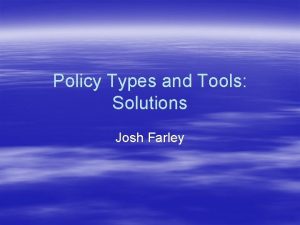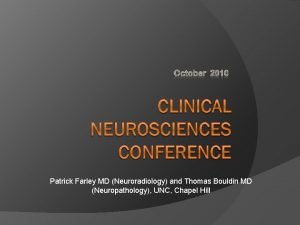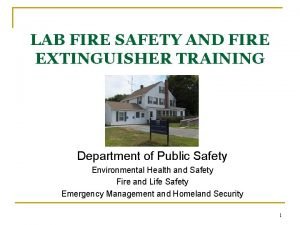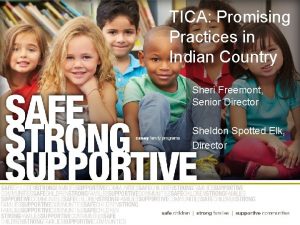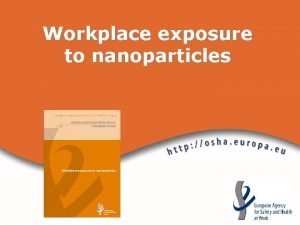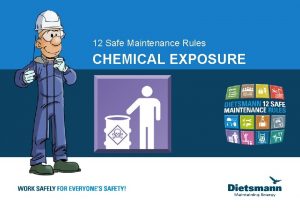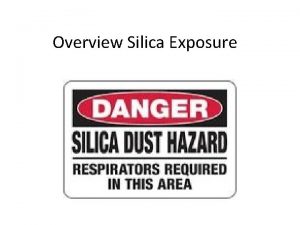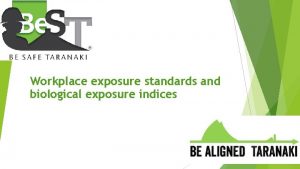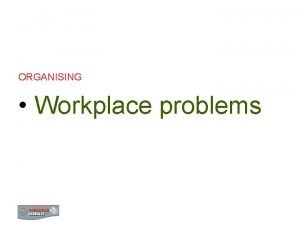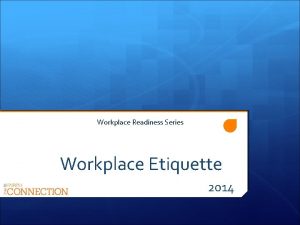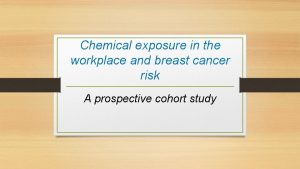Chemical Exposure in the Workplace Sheri Farley Sheri















- Slides: 15

Chemical Exposure in the Workplace

Sheri Farley • Sheri Farley walks with a limp. The only job she could hold would be one where she does not have to stand or sit longer than 20 minutes, otherwise pain screams down her spine and up her legs. • “Damaged goods, ” Ms. Farley describes herself, recalling how she recently overheard a child whispering to her mother about whether the “crippled lady” was a meth addict.

• For about five years, Ms. Farley, 45, stood alongside about a dozen other workers, spray gun in hand, gluing together foam cushions for chairs and couches sold under brand names like Broyhill, Ralph Lauren and Thomasville. Fumes from the glue formed a yellowish fog inside the plant, and Ms. Farley’s doctors say that breathing them in eventually ate away at her nerve endings, resulting in what she and her co-workers call “dead foot. ”

• A chemical she handled — known as n-propyl bromide, or n. PB — is also used by tens of thousands of workers in auto body shops, dry cleaners and high-tech electronics manufacturing plants across the nation. Medical researchers, government officials and even chemical companies that once manufactured n. PB have warned for over a decade that it causes neurological damage and infertility when inhaled at low levels over long periods, but its use has grown 15 -fold in the past six years.

• Such hazards demonstrate the difficulty, despite decades of effort, of ensuring that Americans can breathe clean air on the job. Even as worker after worker fell ill, records from the Occupational Safety and Health Administration show that managers at Royale Comfort Seating, where Ms. Farley was employed, repeatedly exposed gluers to n. PB levels that exceeded levels federal officials considered safe, failed to provide respirators and turned off fans meant to vent fumes.

Law of unintended consequences • It shows how an Environmental Protection Agency program meant to prevent the use of harmful chemicals fostered the proliferation of one, and how a hard-fought victory by OSHA in controlling one source of deadly fumes led workers to be exposed to something worse — a phenomenon familiar enough to be lamented in government parlance as “regrettable substitution. ”

And it highlights a startling fact: OSHA, the watchdog agency that many Americans love to hate and industry often faults as overzealous, has largely ignored long-term threats. Partly out of pragmatism, the agency created by President Richard M. Nixon to give greater attention to health issues has largely done the opposite.

OSHA devotes most of its budget and attention to responding to here-and-now dangers rather than preventing the silent, slow killers that, in the end, take far more lives. Over the past four decades, the agency has written new standards with exposure limits for 16 of the most deadly workplace hazards, including lead, asbestos and arsenic. But for the tens of thousands of other dangerous substances American workers handle each day, employers are largely left to decide what exposure level is safe.

The Employer Response • Royale Comfort Seating disputes that Ms. Farley’s health problems and those of some other workers were linked to their jobs. Company officials also say that while they have sought to safeguard their workers, they have also feared losing jobs to foreign competitors, as many of their industry counterparts in North Carolina have.

Royale has not switched away from the n. PB glues, managers said, because alternatives did not work well, were sometimes more dangerous and were almost always more expensive.

Long Term Heath Impacts • Chronic ailments caused by toxic workplace air — black lung, stonecutter’s disease, asbestosis, grinder’s rot, pneumoconiosis — incapacitate more than 200, 000 workers in the United States annually. More than 40, 000 Americans die prematurely each year from exposure to toxic substances at work — 10 times as many as those who die from the refinery explosions, mine collapses and other accidents that grab most of the news media attention.

Cost of Occupational Illness and Injury • Occupational illnesses and injuries like Ms. Farley’s cost the American economy roughly $250 billion per year because of medical expenses and lost productivity, according to government data analyzed by J. Paul Leigh, an economist at the University of California, Davis, more than the cost of diabetes or chronic obstructive pulmonary disease. Roughly 40 percent of medical expenses from workplace hazards, or about $27 billion a year, is paid by public programs like Medicare and Medicaid.

The remedy • Should Sheri sue? A. Yes B. No C. Do not know

The remedy • Should America run the risk of sending jobs overseas? A. Yes B. No C. Not real choice

The remedy • Should OSHA employ the precautionary principle? A. Yes B. No C. Not real choice
 Managing economic exposure and translation exposure
Managing economic exposure and translation exposure Managing economic exposure and translation exposure
Managing economic exposure and translation exposure Operating exposure
Operating exposure Economic exposure
Economic exposure Jim farley 1898
Jim farley 1898 Josh farley
Josh farley Atypia
Atypia Chris farley and shannon hoon
Chris farley and shannon hoon Watson farley williams training contract
Watson farley williams training contract Shannon hoon chris farley
Shannon hoon chris farley Navbatchi sheri
Navbatchi sheri What is natural environment teaching
What is natural environment teaching Zulfiya poemalari
Zulfiya poemalari Pull the pin
Pull the pin Sheri freemont
Sheri freemont Momaqaymoq rasmi
Momaqaymoq rasmi





